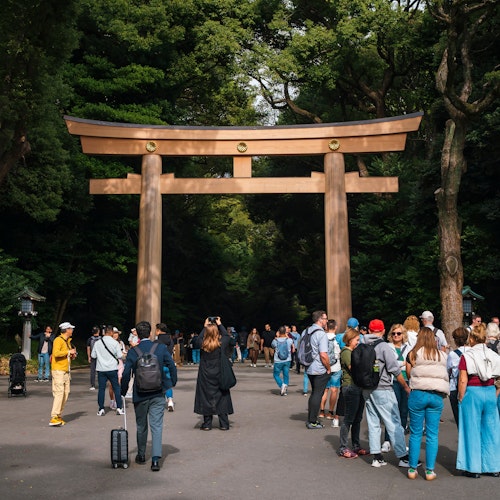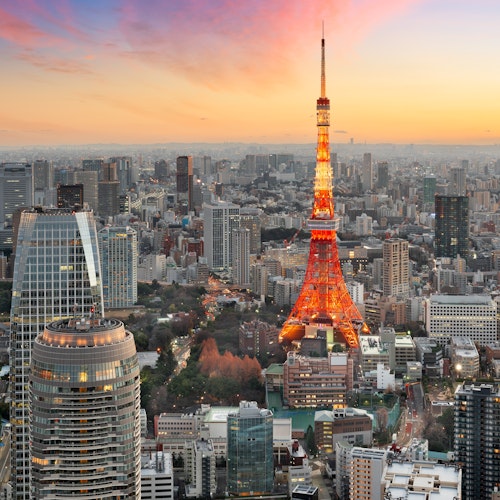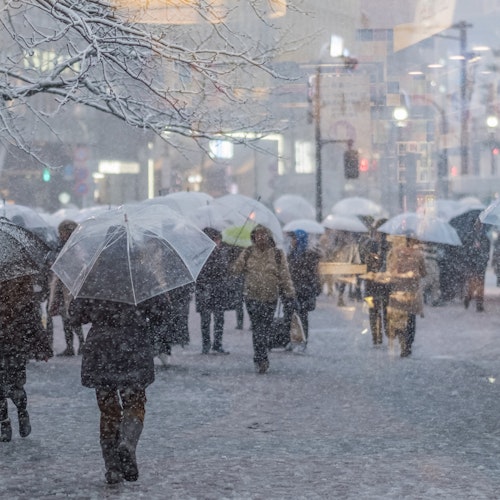
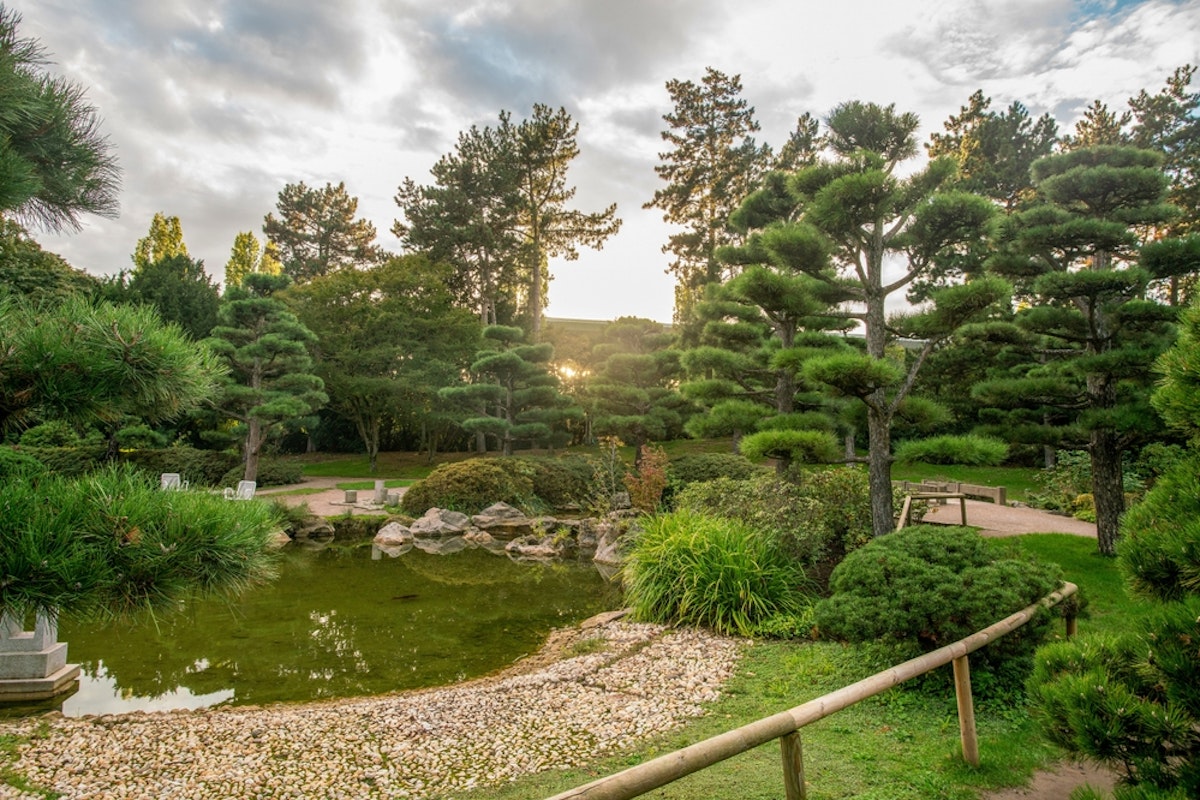
Japan, a country known for its rich history and tradition, is also home to some of the most stunning gardens in the world. These gardens are an integral part of Japanese culture, reflecting the country's love for nature and the art of landscaping. With a unique blend of serenity, elegance, and harmony, these gardens offer a tranquil escape in the heart of bustling cities. From the iconic Kenroku-en in Kanazawa to the serene Katsura Imperial Villa in Kyoto, Japan's gardens are magical places that are sure to captivate any visitor.
These gardens are not just about aesthetic appeal; they also hold historical and cultural significance. For instance, Kyoto's Ryoanji Temple houses the most famous stone garden in Japan, offering a unique experience of tranquillity amidst its Zen-inspired layout. Similarly, Tokyo's Shinjuku Gyoen National Garden, a blend of traditional Japanese, French, and English landscape styles, is a testament to the country's ability to adapt and incorporate different cultural influence.
Whether you're a nature lover, a history enthusiast, or simply a traveler seeking a peaceful retreat, these Japanese gardens offer a unique experience that shouldn't be missed. Let's explore the top 10 most beautiful Japanese gardens you must visit in Japan.
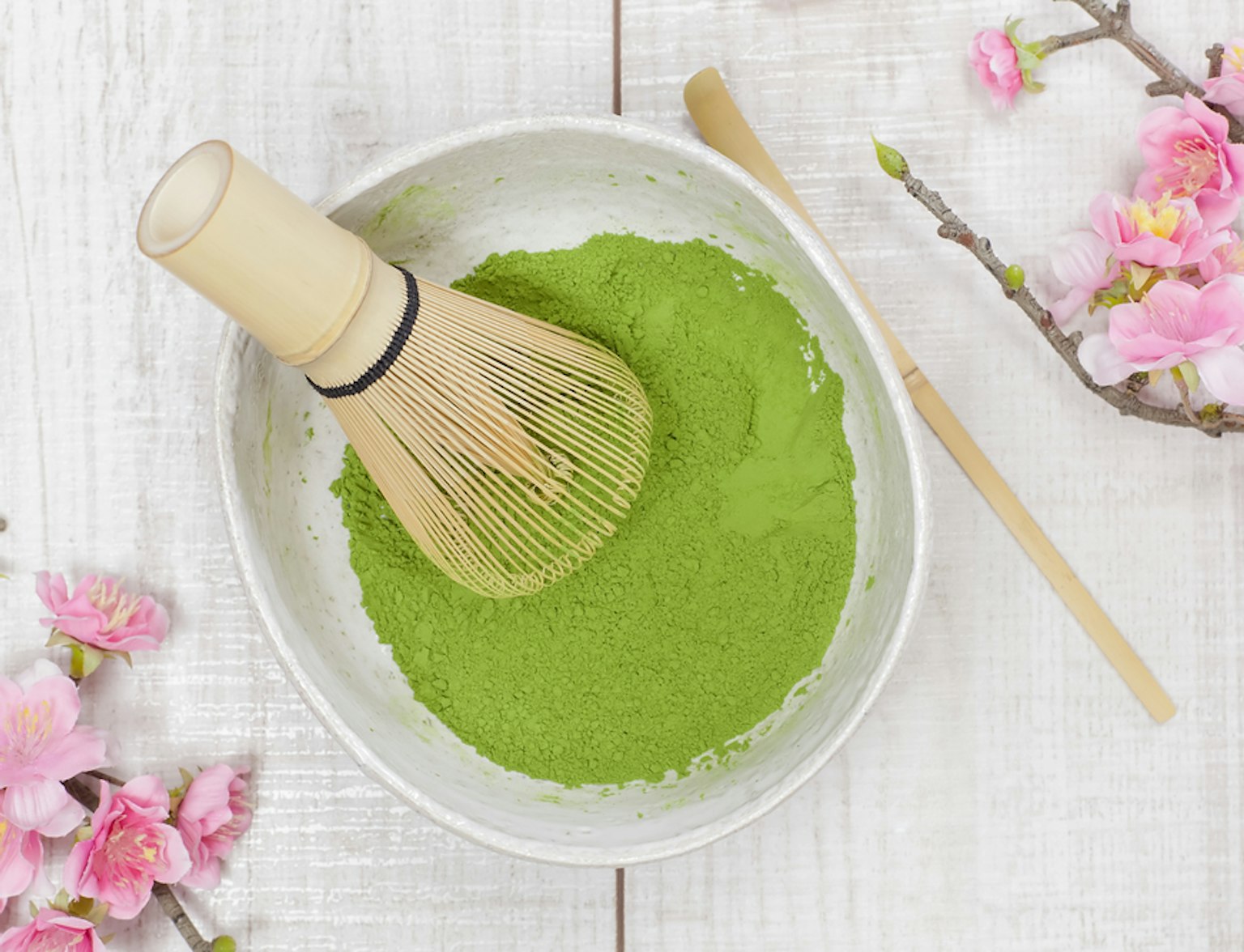
Experience a traditional Japanese tea ceremony in a quiet Tatami room in Osaka.
Stepping into a Japanese garden is like stepping into a living painting. The beauty of these gardens lies not just in their visual appeal but also in the serenity they evoke. Every element, from the meticulously groomed plants and trees to the strategically placed stones and the winding paths, contributes to a harmonious balance that invites tranquility and contemplation. These gardens are designed to mimic natural landscapes, often featuring elements such as hills, islands, forests, and even miniature representations of famous natural landmarks.
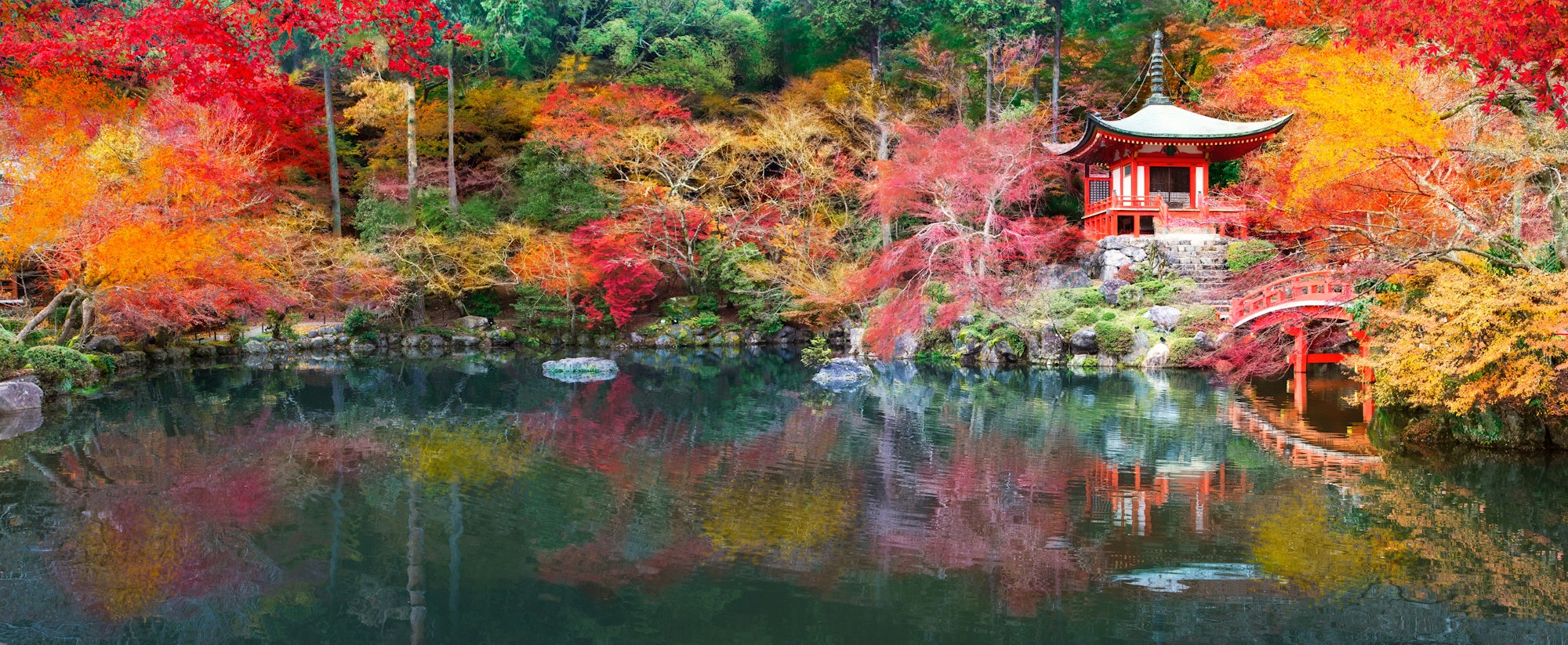
Japanese gardens are a testament to Japan's deep-rooted connection with nature and the philosophical and spiritual beliefs that underpin its culture. The integration of elements like moss temples, tea houses, and zen gardens is not random but a deliberate attempt to create a space for meditation and reflection. The tea garden, for instance, is designed to evoke a sense of calm before participating in the traditional tea ceremony.
Similarly, Zen gardens, with their carefully raked gravel and strategically placed rocks, are meant to stimulate contemplation and introspection. Whether it's the sound of rustling leaves or the sight of koi fish swimming in a serene pond, every aspect of a Japanese garden is thoughtfully curated to inspire peace and harmony.
Read More: A Guide to Japanese Gardens and Meditation Retreats
Japan is home to a myriad of stunning gardens, each offering a unique blend of natural beauty and traditional design. Here are some famous Japanese gardens that are definitely worth a visit:
The Adachi Museum of Art Garden in Yasugi, Shimane Prefecture, is a remarkable piece of art that seamlessly blends the beauty of nature with aesthetic design. The garden has been recognized as the most beautiful Japanese garden for more than 20 years by the US-based Sukiya Living Magazine, demonstrating its enduring appeal and exceptional quality. The founder, Zenko Adachi, believed that a Japanese garden is a living painting and dedicated his life to creating this masterpiece spanning 165,000 square meters.
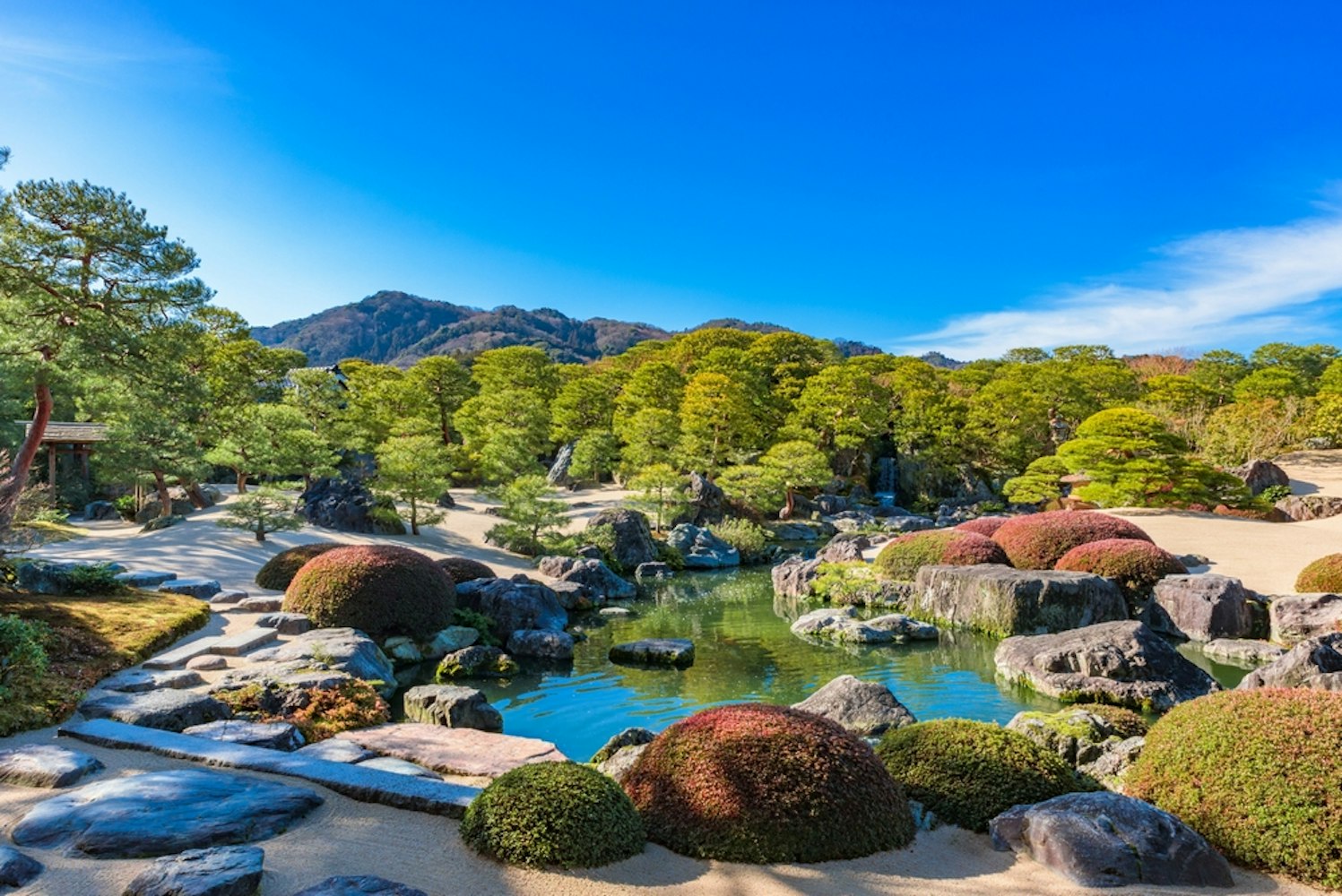
The garden's design creates an illusion of depth, despite its relatively small space, through carefully positioned rocks, trees, moss, and ponds that change with the seasons. Visitors can enjoy the garden from the museum's viewing gallery, offering varied perspectives on the landscape. Despite its three-star rating in the Michelin Green Guide Japan and recognition from international publications like CNN, the Adachi Museum of Art Garden remains less well-known compared to those in Kyoto and Tokyo. This garden is a hidden gem that offers a unique experience for those who appreciate art and nature.
Location: 320 Furukawa-cho, Yasugi, Shimane, Japan
Hours: April-September: 9:00-17:30; October-March: 9:00-17:00
Admission: Adults - 2,300 yen; University Students - 1,800 yen; High School Students - 1,000 yen; Elementary/Junior High School Students - 500 yen
How to Get There: From Tokyo or Osaka, take the Shinkansen (bullet train) to Okayama, then change to the JR Yakumo limited express train to Yasugi Station. From Yasugi Station, the Adachi Museum of Art offers a free shuttle bus, which takes about 20 minutes.
Kenroku-en Garden, situated in the heart of Kanazawa, is one of Japan's three most beautiful gardens. The garden's name translates to "having six factors," representing the six attributes of a perfect landscape: spaciousness, tranquility, artifice, antiquity, waterways, and panoramic views. Constructed during the Edo period by the Maeda clan, this strolling-style garden extends over almost 25 acres and is a testament to traditional Japanese garden design.

Kenroku-en Garden offers a unique blend of natural beauty and architectural elegance. It features an array of plants, ponds, streams, and scenic landscapes that change with every season, offering a different experience each time you visit. The garden is also home to the oldest fountain in Japan and the iconic Kotoji Lantern, a two-legged stone lantern that has become a symbol of the garden. From the stunning cherry blossoms in spring to the snow-covered landscapes in winter, Kenroku-en is a captivating sight year-round.
Location: Kenrokumachi, Kanazawa, Ishikawa, Japan
Hours: March to October 15: 7:00-18:00; October 16 to February: 8:00-17:00 (Early Admission varies)
Admission: 320 yen (free during early admission hours)
How to Get There: Take the Hokuriku Shinkansen from Tokyo to Kanazawa Station (about 2.5 hours). From Kanazawa Station, take the Kanazawa Loop Bus or the Kenrokuen Shuttle Bus directly to Kenroku-en (about 15 minutes).
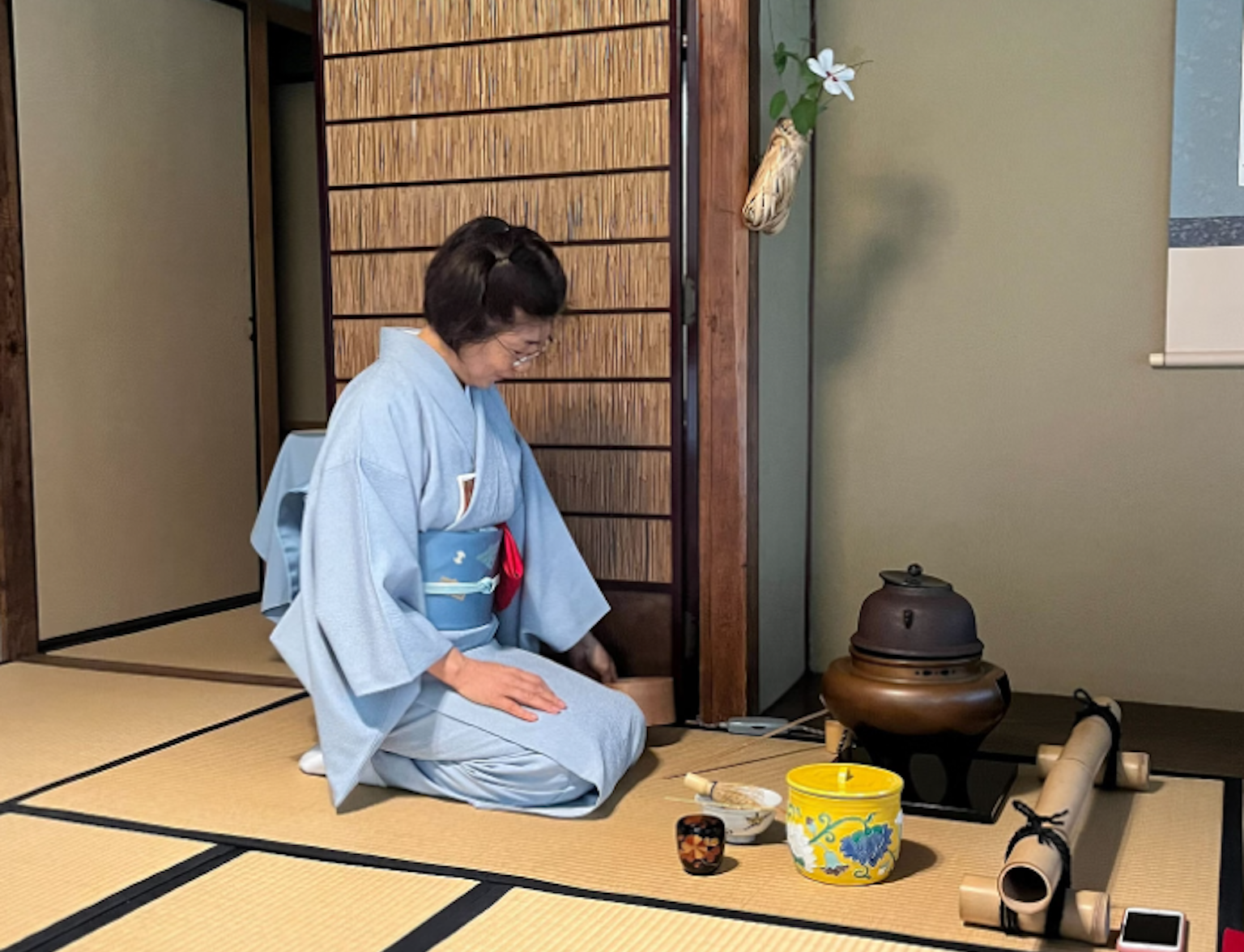
Experience traditional Japanese tea culture in a Samurai-style Tea Ceremony in Kanazawa, featuring local sweets and picturesque garden scenery.
Koraku-en Garden in Okayama is another one of Japan's three most celebrated gardens. Built in the Edo period for the local daimyō (feudal lord), it took over a century to complete. This extensive garden was used not only for the lord's enjoyment but also as a venue for entertaining important guests and hosting celebrations.
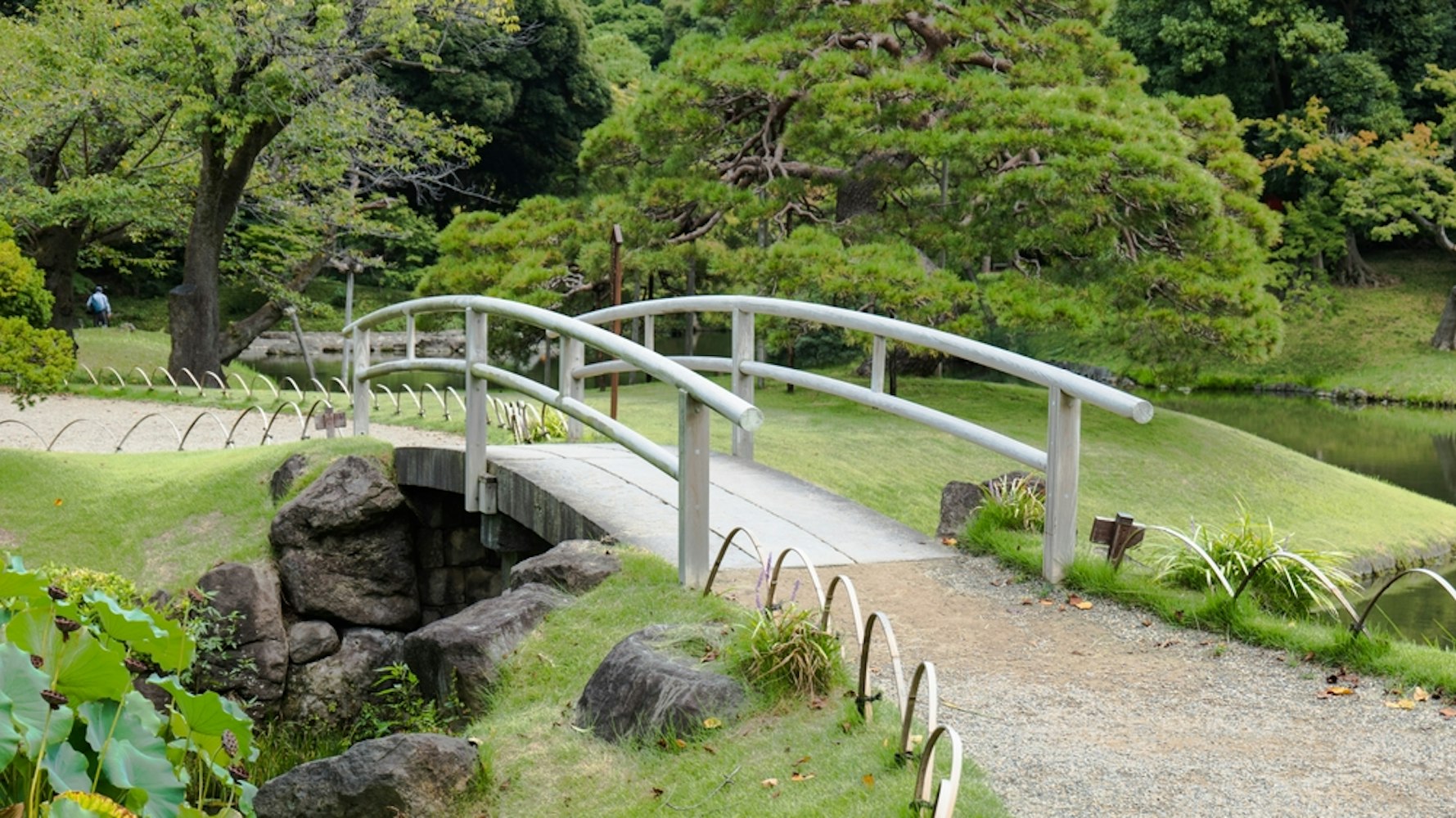
Koraku-en Garden is characterized by its spacious lawns, which are a unique feature among Japanese gardens. It beautifully incorporates various miniatures, including a representation of the famous rice fields and tea plantations. The garden also includes several ponds, plum groves, and a hill providing panoramic views of the surroundings. A charming teahouse sits on an island in the middle of one of the ponds, offering a tranquil spot to appreciate the garden's beauty.
Location: 1-5 Korakuen, Kita Ward, Okayama, Okayama Prefecture, Japan
Hours: March 20 to September: 7:30-18:00; October to March 19: 8:00-17:00
Admission: Korakuen only - 410 yen; Korakuen and Okayama Castle - 640 yen
How to Get There: From Tokyo, take the Shinkansen to Okayama Station (about 3.5 hours). From Okayama Station, take the tram (Higashiyama Line) to Shiroshita Station, then walk for about 10 minutes.
Kairaku-en Garden, located in Mito, is renowned for being one of Japan's "Three Great Gardens." Its unique feature is that unlike most feudal gardens, which were exclusively for the enjoyment of lords, Kairaku-en was designed with the public in mind. This recreational garden spans an impressive area and is home to more than 3,000 plum trees. These trees bloom magnificently in early spring, creating a breathtaking natural landscape that draws visitors from all around the world.
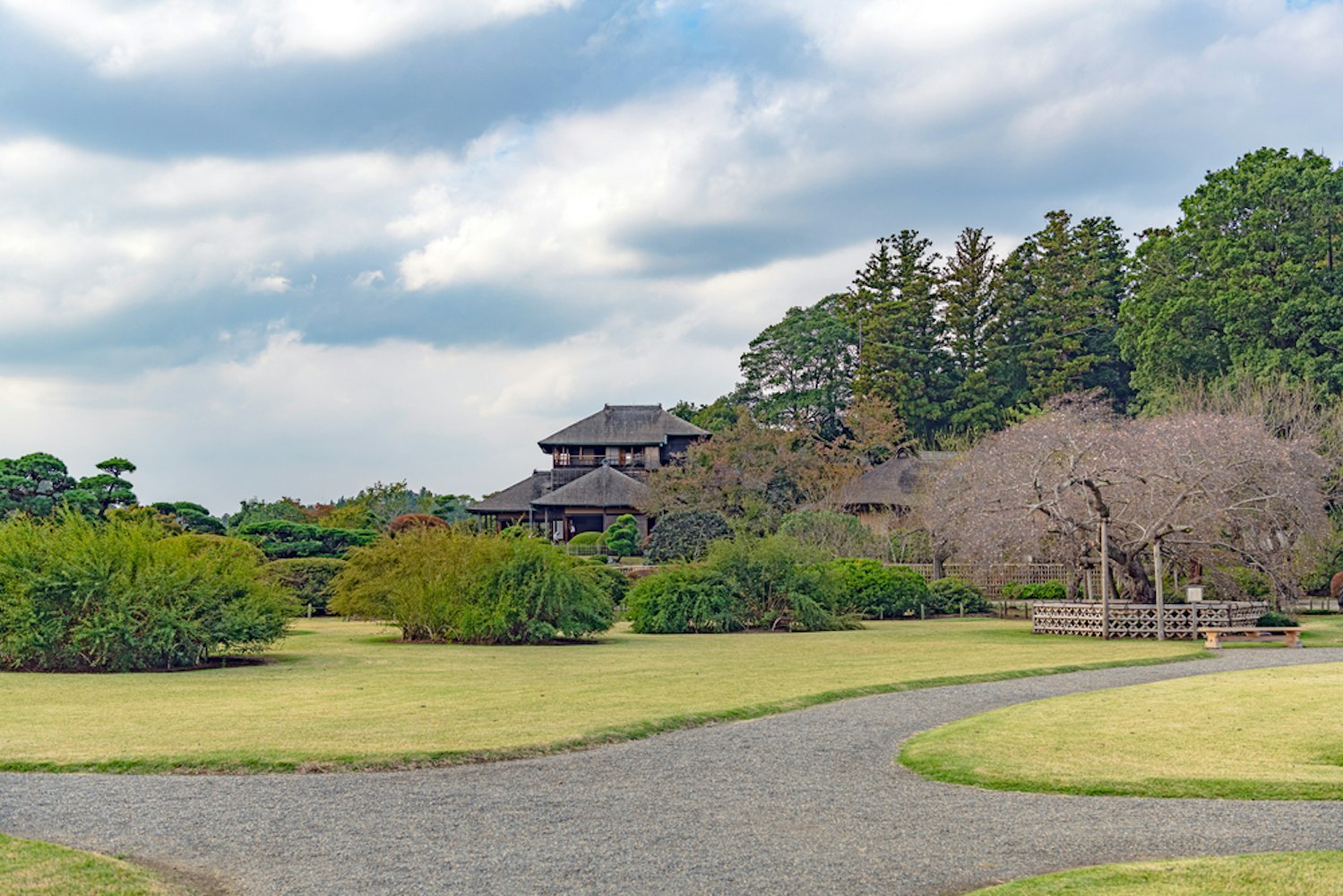
Beyond the plum tree forest, Kairaku-en boasts other interesting features. The garden contains a bamboo grove, cedar woods, and the Kobuntei, a traditional Japanese-style house. This stone house provides a vantage point, offering spectacular views of the entire garden. The garden's design is a testament to Japanese gardening, incorporating elements such as stones, plants, and water to create a harmonious and tranquil space.
Location: 1-3-3 Tokiwa-cho, Mito, Ibaraki Prefecture, Japan
Hours: Mid-February to September: 6:00-19:00; October to Mid-February: 7:00-18:00
Admission: 300 yen (free before 9am and for Ibaraki residents outside the Plum Festival)
How to Get There: From Tokyo, take the JR Joban Line to Mito Station (about 75 minutes). From Mito Station, take a bus from the North Exit to Kairakuen (about 20 minutes).
Also See, Exploring Japan's Most Tranquil Cherry Blossom Gardens
The Ryoan-ji Temple in Kyoto is home to one of the most famous rock formations in Japan. The temple's Zen garden, often referred to as the Moss Temple, is a masterpiece of simplicity and serenity, embodying the essence of Zen philosophy. This minimalist garden consists of 15 carefully arranged rocks on a bed of raked white gravel, surrounded by moss-covered walls. The layout is designed so that from any angle, at least one rock is always hidden from view, symbolizing the incompleteness of life.

The Ryoan-ji Temple Garden is a beautiful example of karesansui, or "dry landscape," a style of Japanese garden that uses rocks and sand to represent islands and water. Despite its simplicity, or perhaps because of it, the garden has been captivating visitors for centuries. It invites contemplation and introspection, making it a spiritual sanctuary in the heart of Kyoto.
Location: 13 Ryoanji Goryonoshitacho, Ukyo Ward, Kyoto, Kyoto Prefecture, Japan
Hours: March to November: 8:00-17:00; December to February: 8:30-16:30
Admission: 500 yen
How to Get There: From Kyoto Station, take the JR bus to the Ryoanji-mae stop (about 30 minutes). The temple is a 7-minute walk from the bus stop.
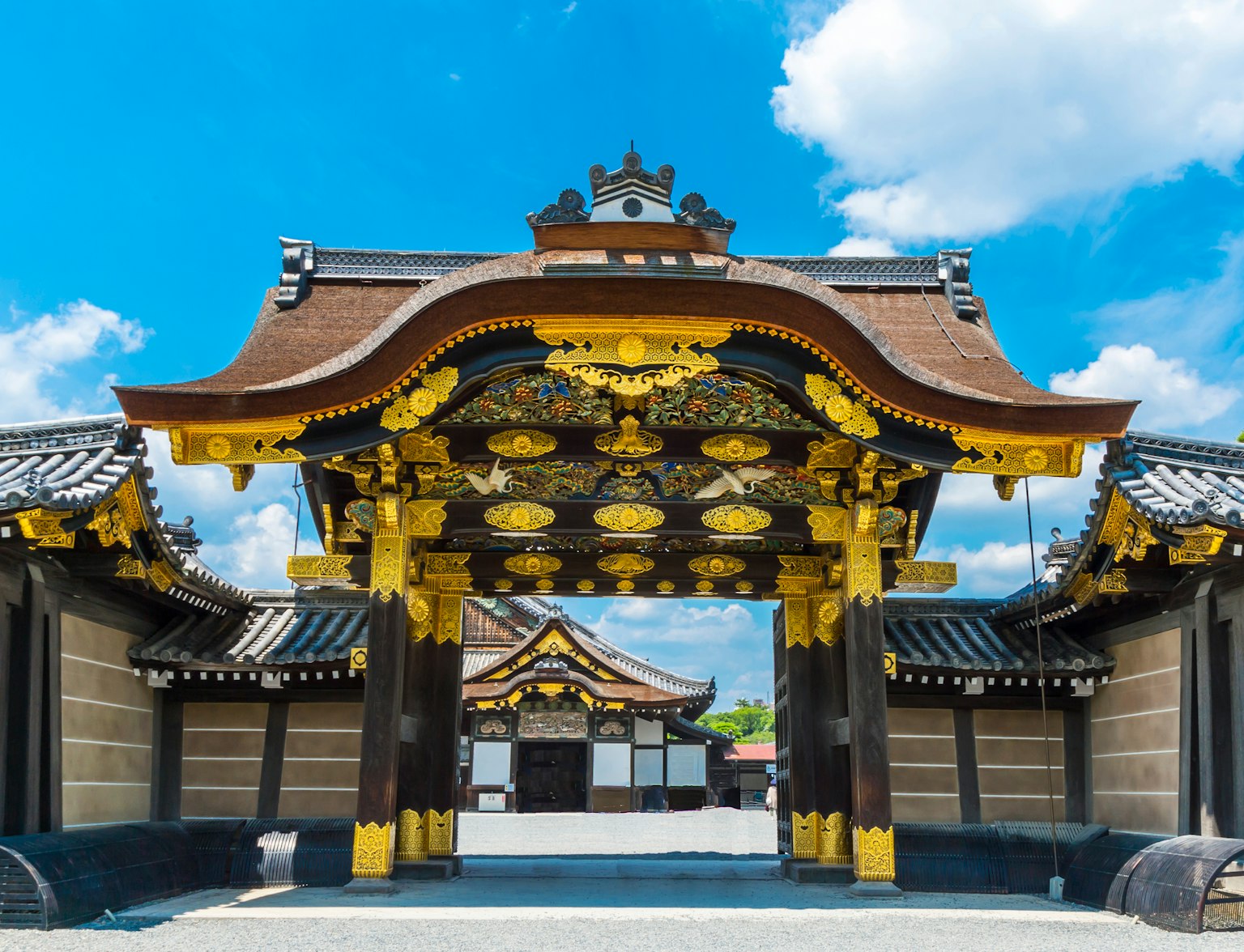
Visit Ryoanji Temple with this tour.
Kyoto's Ginkaku-ji, or the Silver Pavilion, is a Zen temple that features one of Japan's most beautiful strolling gardens. The garden and the temple were originally built as a villa for Shogun Ashikaga Yoshimasa, who desired a place of peace and tranquility. Today, it stands as a testament to the aesthetics of the Higashiyama Culture of the Muromachi period.
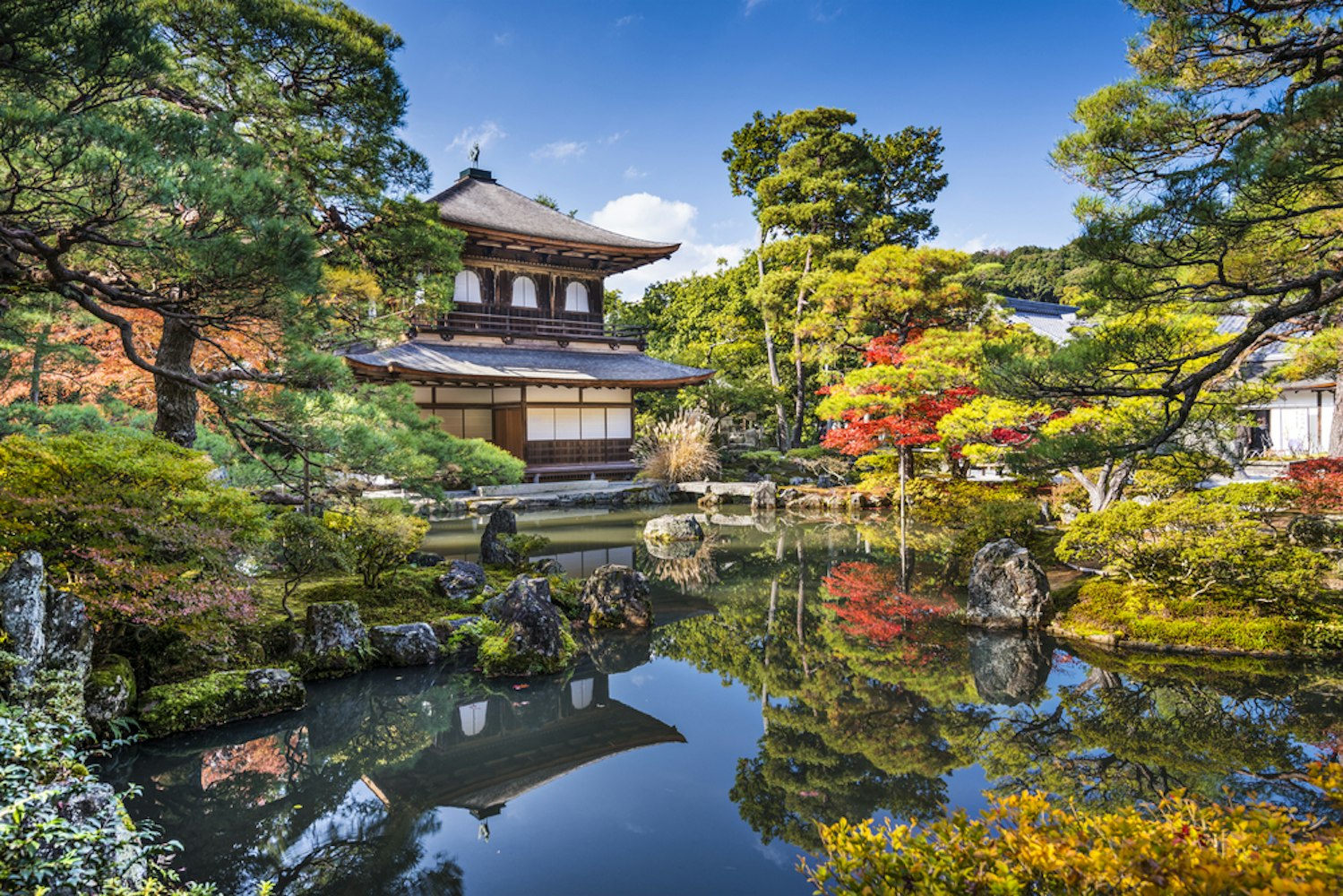
The garden is designed to harmonize with the natural landscape, featuring a large pond, moss-covered grounds, and a unique sand mound called the "Sea of Silver Sand." The pavilion, although not covered in silver as its name suggests, overlooks the garden and reflects beautifully on the pond. The garden also features a variety of plants, trees, and bamboo, which add to its beauty and serenity. Walking through the garden, with its scenic views and tranquil atmosphere, visitors are transported to a world far removed from the bustling city life of Kyoto.
Location: 2 Ginkakujicho, Sakyo Ward, Kyoto, Kyoto Prefecture, Japan
Hours: March to November: 8:30-17:00; December to February: 9:00-16:30
Admission: 500 yen
How to Get There: From Kyoto Station, take the Kyoto City Bus number 5 or 17 to Ginkakuji-michi stop (about 35-40 minutes). The temple is a 10-minute walk from the bus stop.
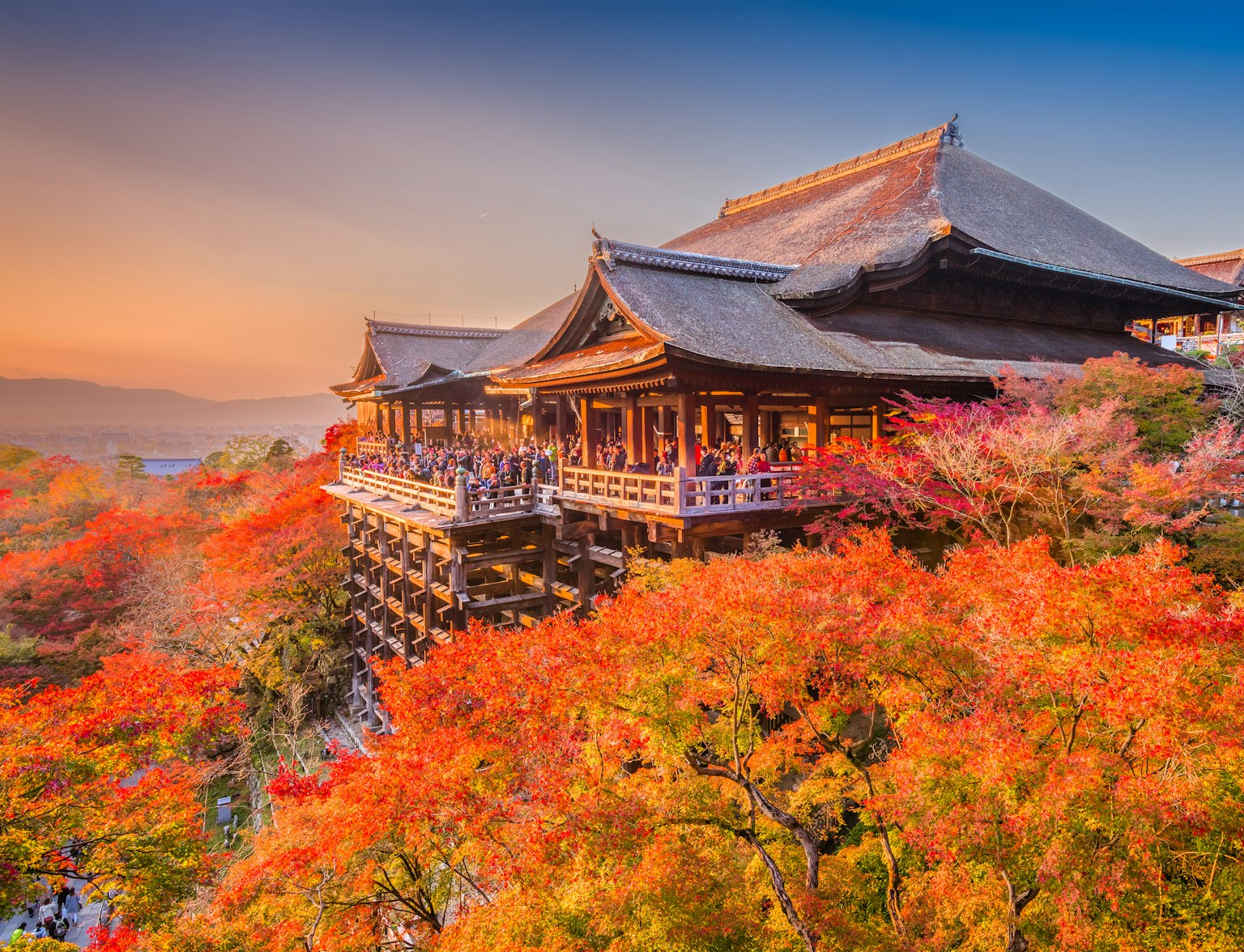
You can reach Ginkakuji with this alternative transport.
Located within the larger Daitoku-ji temple complex in Kyoto, Daisen-in is renowned for its Zen rock garden. This garden, designed between 1509 and 1513, is considered one of the great masterpieces of Japanese culture. It represents a journey from the cosmic to the enlightened, using only rocks and white gravel to symbolize different elements.
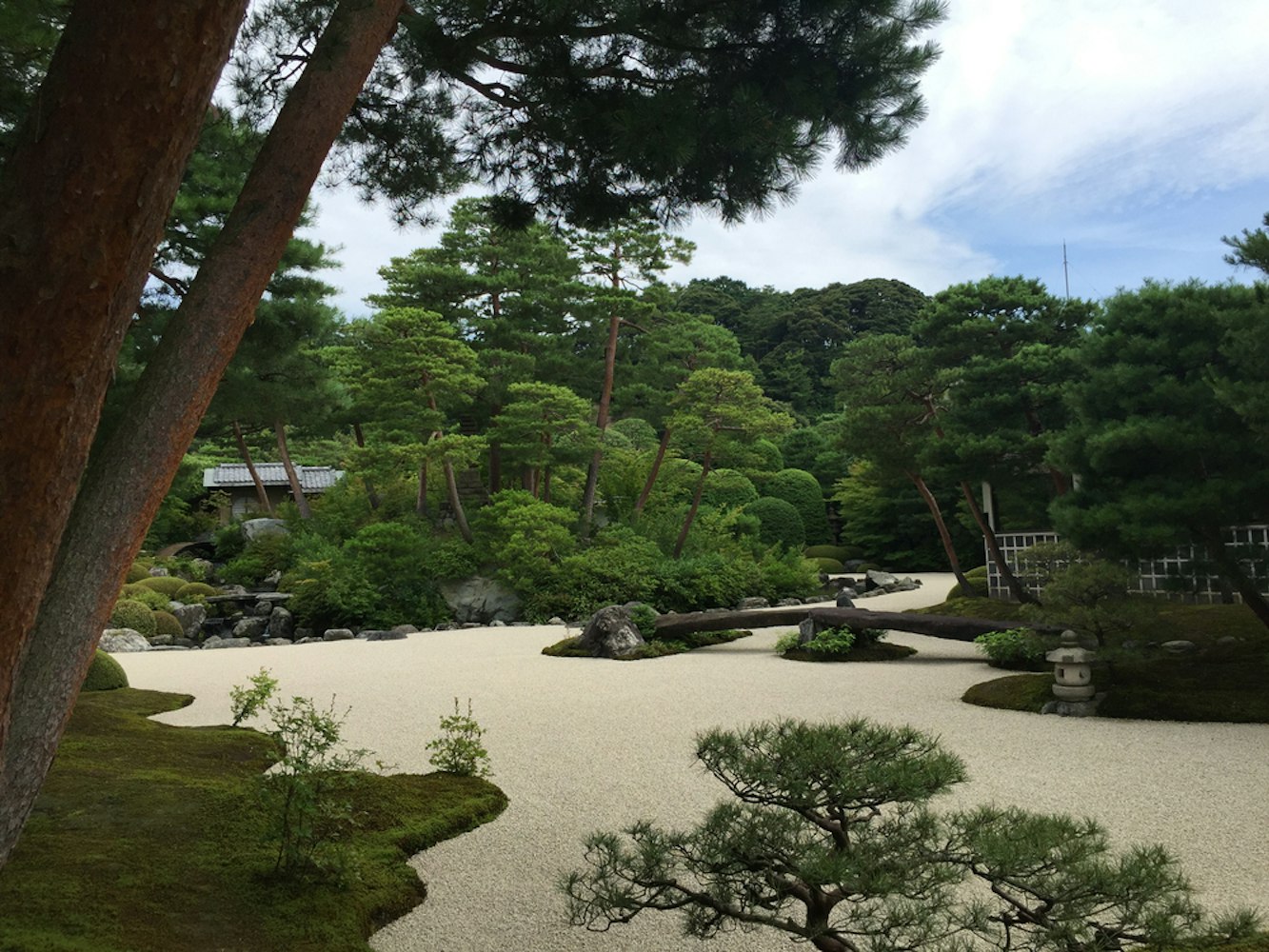
Daisen-in's Zen garden is divided into two main sections. The front garden represents a turbulent ocean with rushing waterfalls, while the rear garden symbolizes calm and serene waters. The garden's design invites contemplation and introspection, serving as a spiritual sanctuary in the heart of Kyoto. Despite its simplicity, or perhaps because of it, the Daisen-in Zen Garden has been captivating visitors for centuries with its profound symbolism and tranquil atmosphere.
Location: 54-1 Murasakino Daitokujicho, Kita Ward, Kyoto, Kyoto Prefecture, Japan
Hours: 9:00-17:00 (9:00-16:30 Dec-Feb)
Admission: Adults 400 yen
How to Get There: From Kyoto Station, take the Karasuma Subway Line to Kitaoji Station (about 15 minutes). Then take a bus or taxi to Daitoku-ji Temple complex (about 10 minutes).
Ninomaru Garden is an enchanting destination nestled within the East Gardens of the Imperial Palace in Tokyo. It's celebrated as one of the best parts of the palace gardens, boasting a couple of beautifully curated ponds teeming with large, colorful fish and lush greenery that provides a tranquil escape from bustling city life. This garden can be found in the secondary circle of defense of the palace, known as the Ninomaru, which adds a historical dimension to its charm.
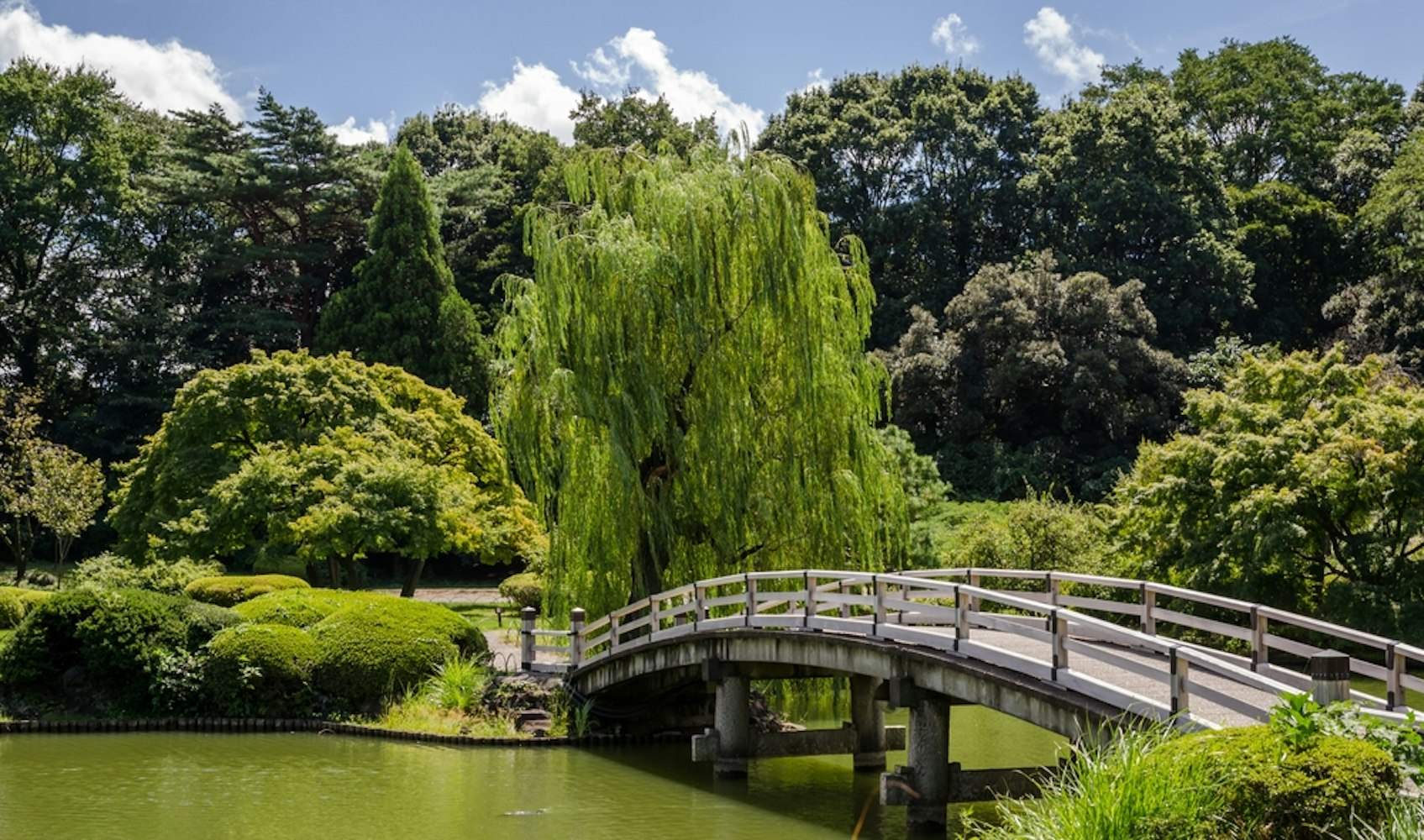
The garden has been through several reconstructions due to fires but has managed to retain its allure throughout the centuries. One of its most noteworthy features is the Suwa-no-chaya tea house, built in 1912, adding an authentic touch to the traditional Japanese landscape. Visitors are also invited to explore the nearby ruins of Edo Castle's inner citadel, the Tenshudai, offering a unique combination of natural beauty and historical exploration.
Location: 1-1 Chiyoda, Chiyoda City, Tokyo, Japan (within the Tokyo Imperial Palace)
Hours:
April-August: 9 am – 5 pm
September, October, March: 9 am-4:30 pm
November-February: 9 am-4 pm
Admission: Free
How to Get There: Accessible from several subway stations including Otemachi (5-minute walk), Takebashi (5-minute walk), and Nijubashimae (10-minute walk).

Include this spot on your custom Tokyo itinerary.
Suizen-ji Joju-en Garden, located in Kumamoto, is a stunning representation of traditional Japanese garden design. Its name translates to "pure water temple," reflecting its origins as a tea retreat for the Hosokawa family during the 17th century. The garden was named after Suizen-ji Temple, which is situated within the garden grounds.
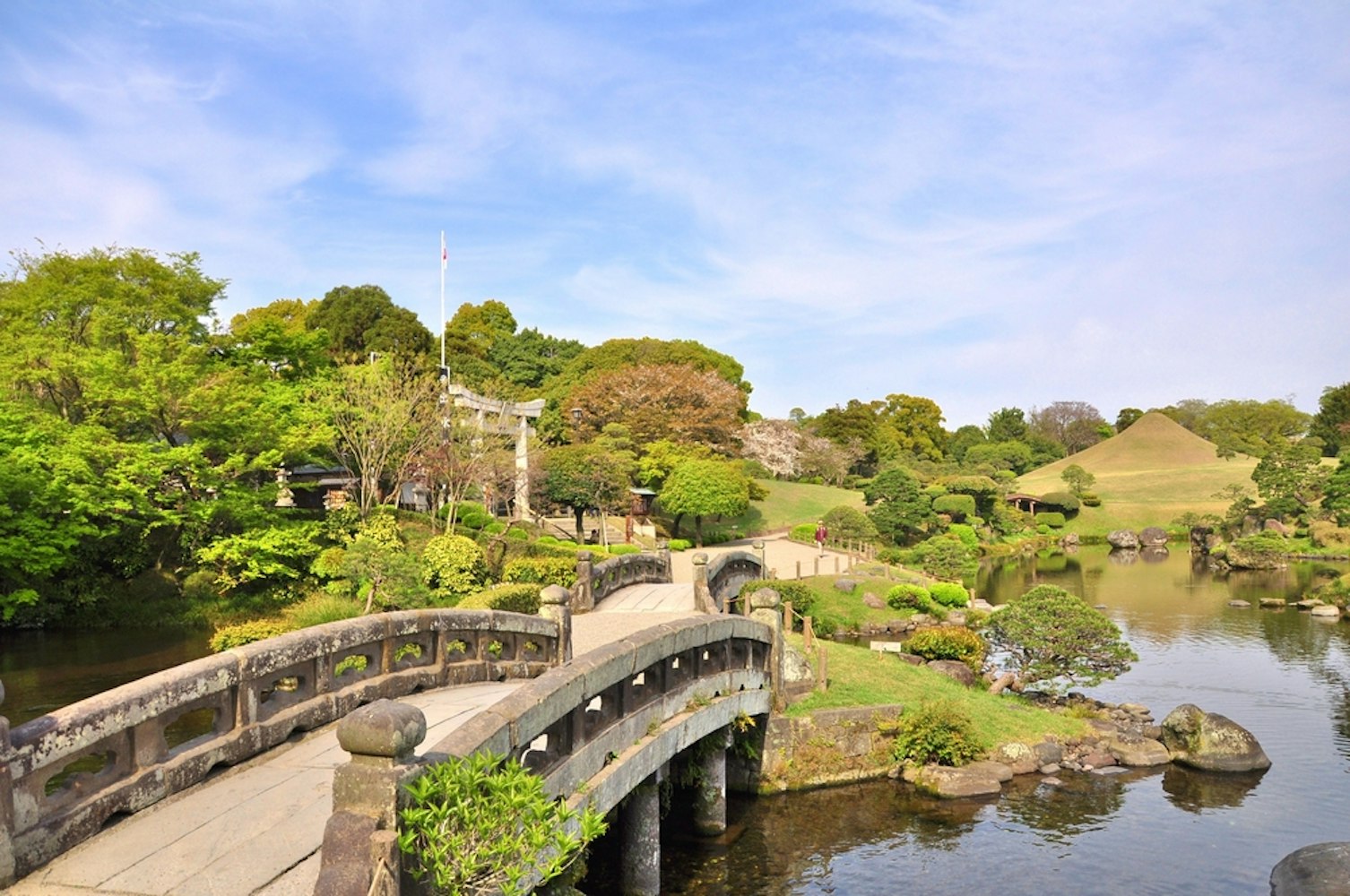
This strolling garden is renowned for its miniature landscapes, including a representation of Mt. Fuji, and its spring-fed pond. Its unique design elements, such as the meticulously manicured lawns and carefully placed stepping stones, make it a must-visit destination. Visitors can also enjoy the seasonal changes in the garden, particularly the vibrant autumn colors and the blooming cherry blossoms in spring.
Location: 8-1 Suizenjikoen, Chuo Ward, Kumamoto, Kumamoto Prefecture, Japan
Hours: 8:30 to 17:00 (entry until 16:30)
Admission: 400 yen
How to Get There: From Kumamoto Station, take the Kumamoto City Tram to Suizenji Koen stop (about 20 minutes). The garden is directly next to the tram stop.
Sankei-en Garden, located in Yokohama, is an expansive traditional Japanese-style garden that was opened to the public in 1906. The garden was designed by Sankei Hara, a silk trader and passionate patron of the arts. It spans over 175,000 square meters and features a central pond, several historic buildings relocated from across Japan, and an array of beautiful plants and flowers.
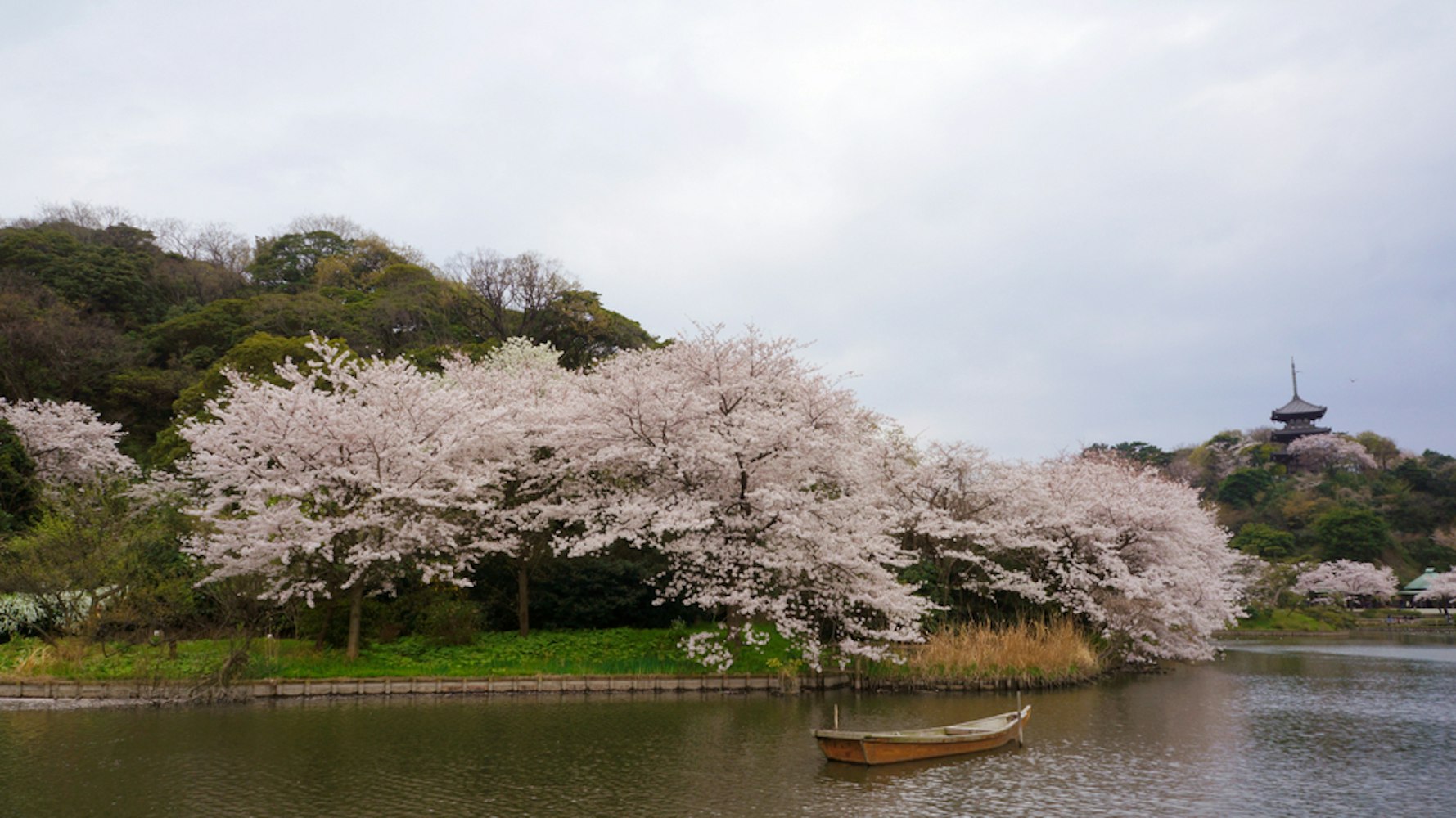
The garden is divided into two sections: the outer garden, which is open to the public, and the inner garden, which houses several important cultural properties. Some notable features include a three-storied pagoda from Kyoto's Tomyoji Temple and a teahouse where visitors can enjoy traditional tea ceremonies. With its serene atmosphere and historical significance, Sankei-en offers a unique opportunity to experience the beauty and tranquility of traditional Japanese gardens.
Location: 58-1 Honmoku Sannotani, Naka Ward, Yokohama, Kanagawa Prefecture, Japan
Hours: 9:00 to 17:00 (entry until 16:30)
Admission: 700 yen
How to Get There: From Yokohama Station, take the city bus number 58, 99, or 101 to Sankei-en Mae stop (about 35 minutes). The garden is a short walk from the bus stop.
Traditional Japanese gardens, often referred to as the most beautiful strolling gardens in the world, are a testament to Japan's profound connection with nature. They stand as serene havens amidst bustling cities like Tokyo, offering recreational spaces that blend art, spirituality, and natural beauty.
Key facets of these captivating gardens include:
Strolling Garden: Designed for leisurely walks, these gardens often feature winding paths that lead visitors through a carefully curated landscape. The paths might take guests past tranquil ponds, under the shade of blossoming trees, or towards stunning views of hills and waterfalls.
Tea Garden: These gardens house traditional tea houses, where ceremonial tea preparations take place. The tea garden is often a separate, secluded area within the larger garden, providing a peaceful environment for introspection and connection with nature.
Moss Temple: Known as Saiho-ji, this moss temple in Kyoto is a prime example of a Japanese garden. It's renowned for its moss-covered grounds, which create a lush, green carpet that changes hues with the seasons.
Pavilions and Villas: Many Japanese gardens feature pavilions and villas. Local lords would use these as rest houses, offering panoramic views of the surrounding gardens. These structures also serve different purposes during celebrations and upcoming events.
Ponds and Islands: Water elements such as ponds and lakes are essential in Japanese gardens. They often contain islands, symbolizing mythical lands or the earth in Buddhist cosmology.

Experience the beauty and spirit of ancient Japan at Atsuta Shrine and Shirotori Garden in Nagoya!
These gardens, whether they're public parks or part of a museum collection, showcase the art of landscaping to create a harmonious balance between humans and nature. They serve as spaces for relaxation, celebration, and appreciation of the natural world.
When planning a trip to the beautiful strolling gardens of Japan, timing is essential. Each season transforms these recreational gardens into different landscapes, offering unique experiences for guests. Spring, particularly from late March to early April, is often considered one of the best times to visit Japanese gardens. This period coincides with the cherry blossom season when tea houses and strolling gardens are framed by vibrant pink flowers. The moss in the gardens, such as those in the famous Moss Temple, also appears fresher after the winter snow.
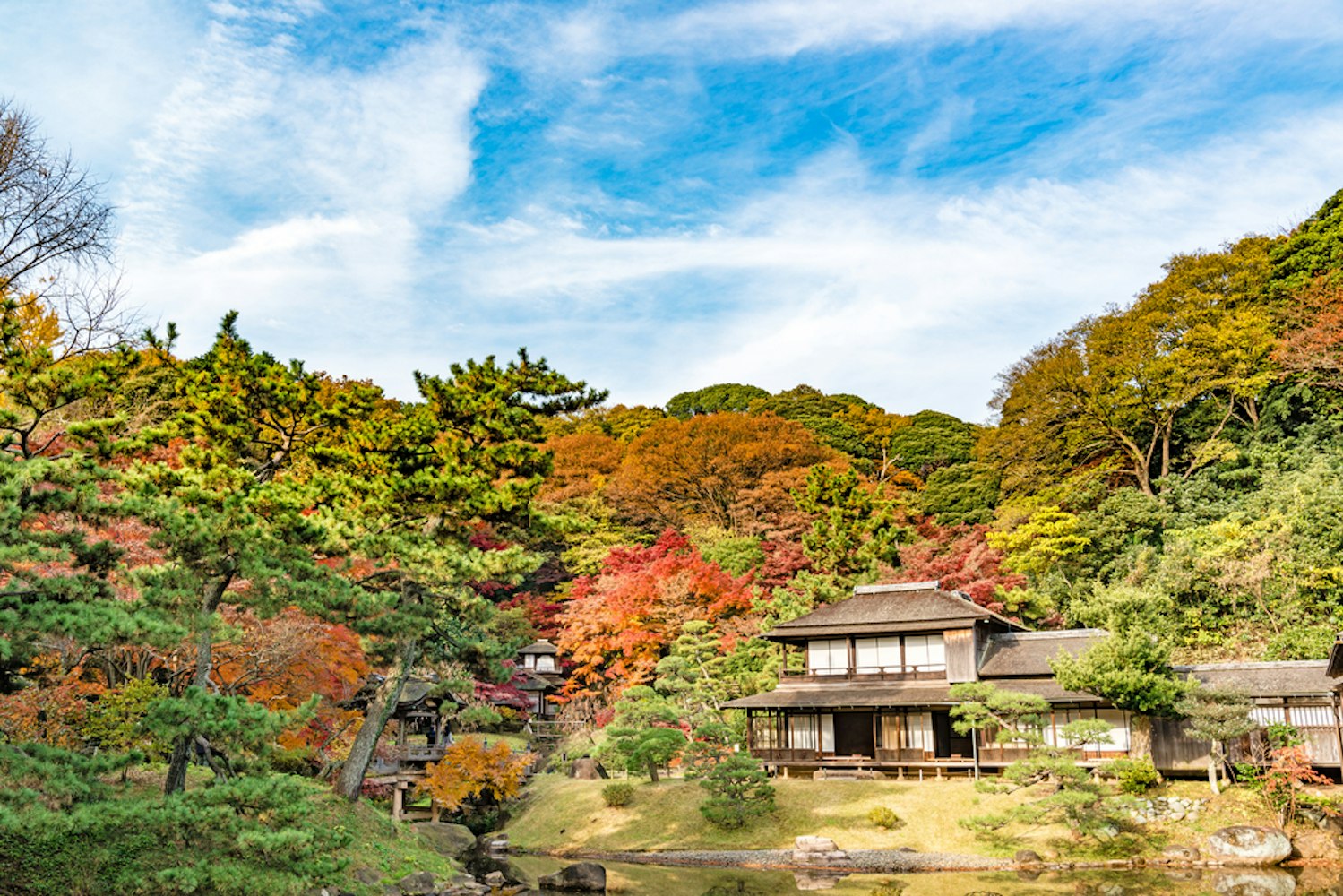
Summer, although hot and humid, brings about lush greenery, making the gardens look more alive. In Autumn, Japanese gardens are ablaze with the fiery colors of maple trees, offering a stunning contrast against the serene ponds and stone structures. Local lords often held special events during this season in pavilions overlooking the gardens.
Winter, on the other hand, offers a unique perspective. The gardens, especially those in cities like Tokyo, become tranquil landscapes of white, with tea houses and bridges standing out against the snow. No matter when you visit, these gardens are a testament to Japan's natural beauty and gardening prowess.
The beauty of Japanese gardens is a testament to the country's deep connection with nature and its mastery in crafting landscapes that provoke thought and tranquility. Each garden, from the most beautiful strolling gardens to recreational spots, is a masterpiece that showcases Japan's traditional aesthetics and its philosophy of harmony. Whether you're winding your way through stone paths, admiring the view from pavilions, or enjoying the serene atmosphere by a pond, a visit to these gardens offers an immersive experience into the heart of Japanese culture.
We invite you to explore these magnificent gardens firsthand. At TripToJapan, we offer carefully curated tours that take you to some of the best-surviving examples of these traditional Japanese gardens. Our local guides are passionate about sharing their knowledge and love for these unique landscapes.
Don't miss out on upcoming events and seasonal highlights that make each visit unique. Book your tour now and embark on a journey that will leave you with memories to last a lifetime. Experience the magic of Japan's gardens with us - where every path leads to a new discovery.
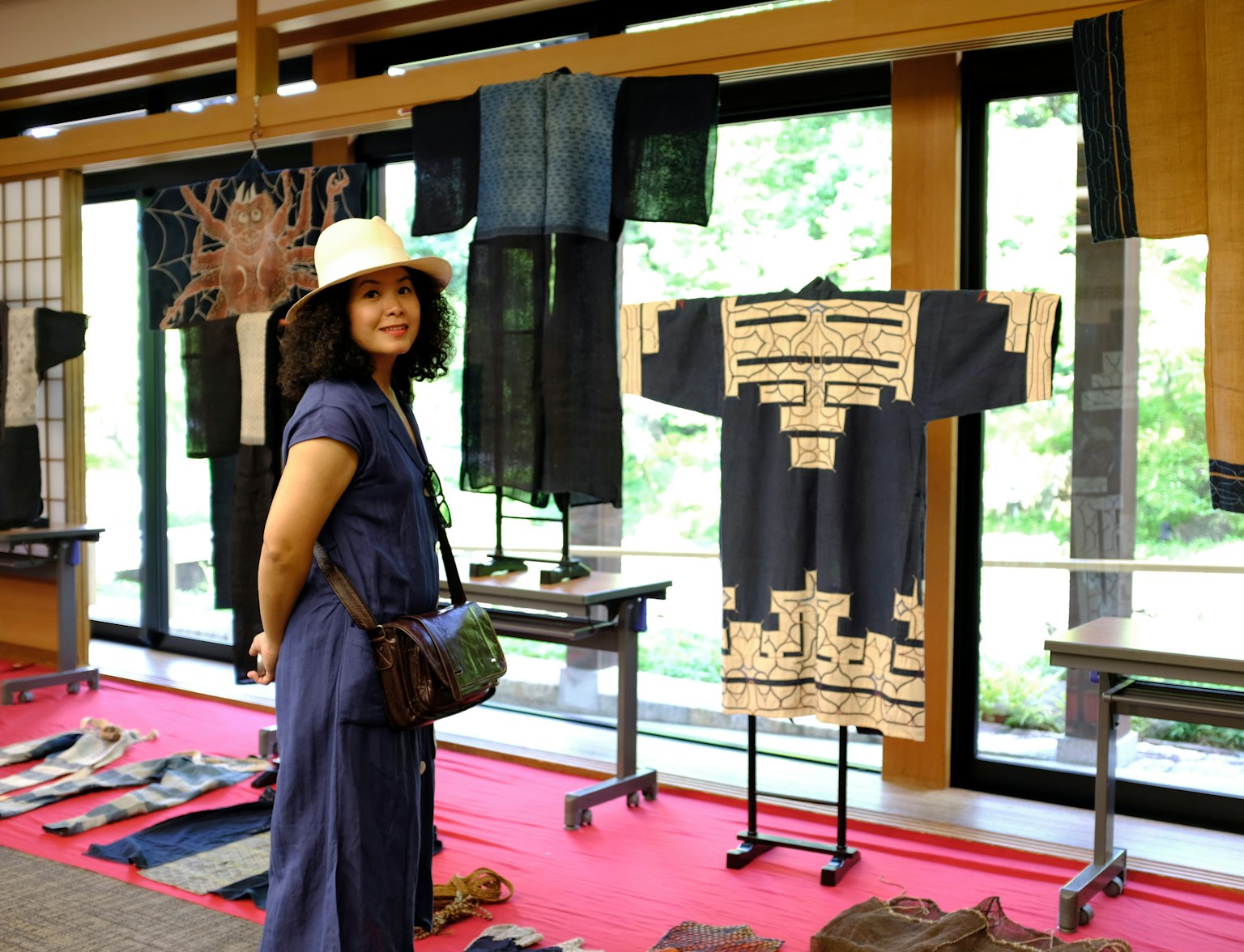
Explore Nagoya and see the Tokugawa Museum and Garden.
